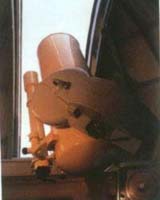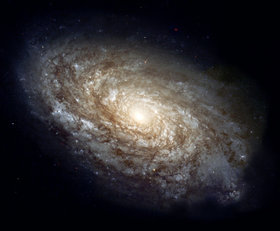 With NASA revisiting Earth's little sister in the not so distant future, a few scientists are dreaming of establishing massive telescopes upon the lunar surface.
With NASA revisiting Earth's little sister in the not so distant future, a few scientists are dreaming of establishing massive telescopes upon the lunar surface.
In order to make this dream of reality, scientists are proposing on converting lunar dust into concrete, and turning a few craters into giant lunar telescopes.
(Space.com) "We could make huge telescopes on the moon relatively easily, and avoid the large expense of transporting a large mirror from Earth," said Peter Chen of NASA Goddard Spaceflight Center in Greenbelt, Md., and the Catholic University of America in Washington, D.C. "Since most of the materials are already there in the form of dust, you don't have to bring very much stuff with you, and that saves a ton of money." [...]
To arrive at the concrete recipe, Chen and his Goddard colleagues including Douglas Rabin, mixed small amounts of carbon nanotubes and epoxies (glue-like materials) with simulated lunar dust, or crushed rock that has the same composition and grain size as dust on the moon.
After several iterations, one of which yielded what Chen described as "gooey and smelly," the team created a strong material with the consistency of concrete. Next, they coated the material with epoxy and spun the wet lunar concrete to form a 12-inch-wide (30-centimeter-wide) bowl-like structure shaped like a telescope mirror.
Scientists hope to be able to coat these "bowl-like structures" with aluminum, an element that is "fairly common" within the lunar crust.
While a lunar based telescope would probably have its fair share of problems (ranging from "moon static" to meteorites), it could enable humanity to observe the universe a little clearer without the radio noise from Earth.










![ColonyWorlds[at]Gmail[dot]com](http://img.photobucket.com/albums/v438/hiddennook/ColonyWorlds.png)






